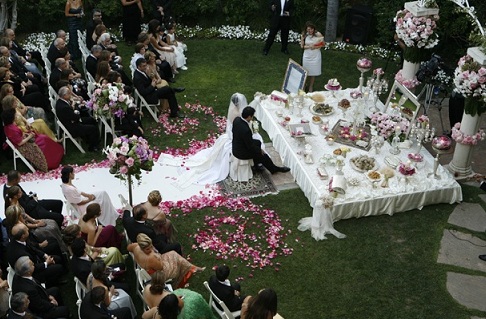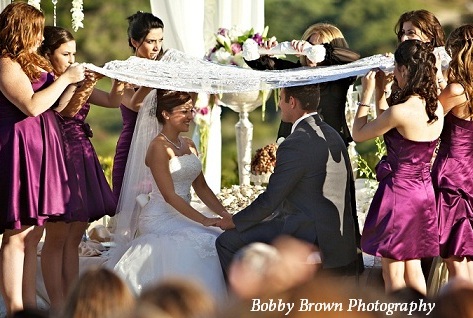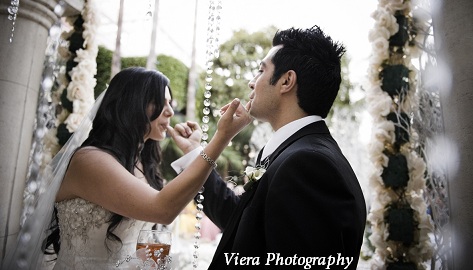Perfect Spanish Weddings have a wealth of experience in creating and designing these beautiful Ethnic Wedding Ceremonies
The “Aghd” which is the legal ceremony of the Persian wedding, is a spectacular and joyous event celebrated with family, friends, music and fun. The Aghd usually takes place in the afternoon at the bride’s family home or other venue of choice. This is the time when the bride and groom sign a wedding contract, legally binding them as husband and wife.
Traditionally, the Aghd ceremony, takes place by Sofreh Aghd, Persian and Iranian’s, which is an exquisite spread laid out on the floor containing many symbolic items:
The Blessed Bread, specially baked bread with calligraphy written on it. Persian feta cheese, and greens are also placed on the spread to symbolize the basic food that is needed to sustain life. Symbols of Fertility: Decorated eggs, almonds, walnuts and hazelnuts. The Heavenly Fruits: pomegranates, grapes, apples. Persian Rose: A cup of rose water and a rose extracted from the Gol-e Mohammadi (Mohammadan flower). This is to perfume the air. A bowl made out of rock candy, Honey - A cup of honey should be on the spread.

During the ceremony, the couple is seated at the foot of the Sofreh facing the mirror placed at the head of the Sofreh with their backs to their family and friends. When the bride enters the room she has her veil covering her face. Once the bride sits beside the bridegroom she removes her veil and the first thing that the bridegroom sees in the mirror should be the reflection of his wife-to-be.
In religious Muslim families the “Aghd” ceremony begins with an officiant reading versus from the Quran, while non-religious families read versus from famous poems and poetic literature. During this time, a silk veil-like fabric is held over the couple’s heads by female relatives. Other close friends and family members then take turns grinding sugar cones over the silk veil to symbolize their wish for a sweet life for the couple. Next, the ceremony officiant asks about the couple’s mutual consent of the marriage. The groom is the first to be questioned and is asked if he wishes to enter into the marriage, to which he gives a quick positive response.
The bride is then asked the same question. However, the bride does not give an immediate answer, making the groom wait for her hand in marriage. The question is then asked again. At this point, family and friends yell out funny comments about the bride’s whereabouts. For example, “Aroos rafteh gol bechineh”, meaning “the bride has gone to pick flowers.” This process is repeated three times until the bride finally gives her response by saying “Ba ejazeyeh pedar va madar va bozorgtar-ha, baleh” which means “with the permission of my parents and elders, yes.” This moment marks the point in which the couple is considered married.

The bride and groom then kiss and exchange wedding rings. Finally, the bride and groom dip their pinkie fingers in a cup of honey placed in their Sofreh and put it in the others’ mouth. This gesture symbolizes the start of their marriage with sweetness and love. Finally, all the guests will shower the newlyweds with small sugar and rose water covered almond slivers called "Noghl."
After the ‘I-Do’s’, it’s tradition for the couple’s families to present them with wedding gifts. Usually, these gifts include fine jewellery such as gold coins and bridal jewellery sets. 